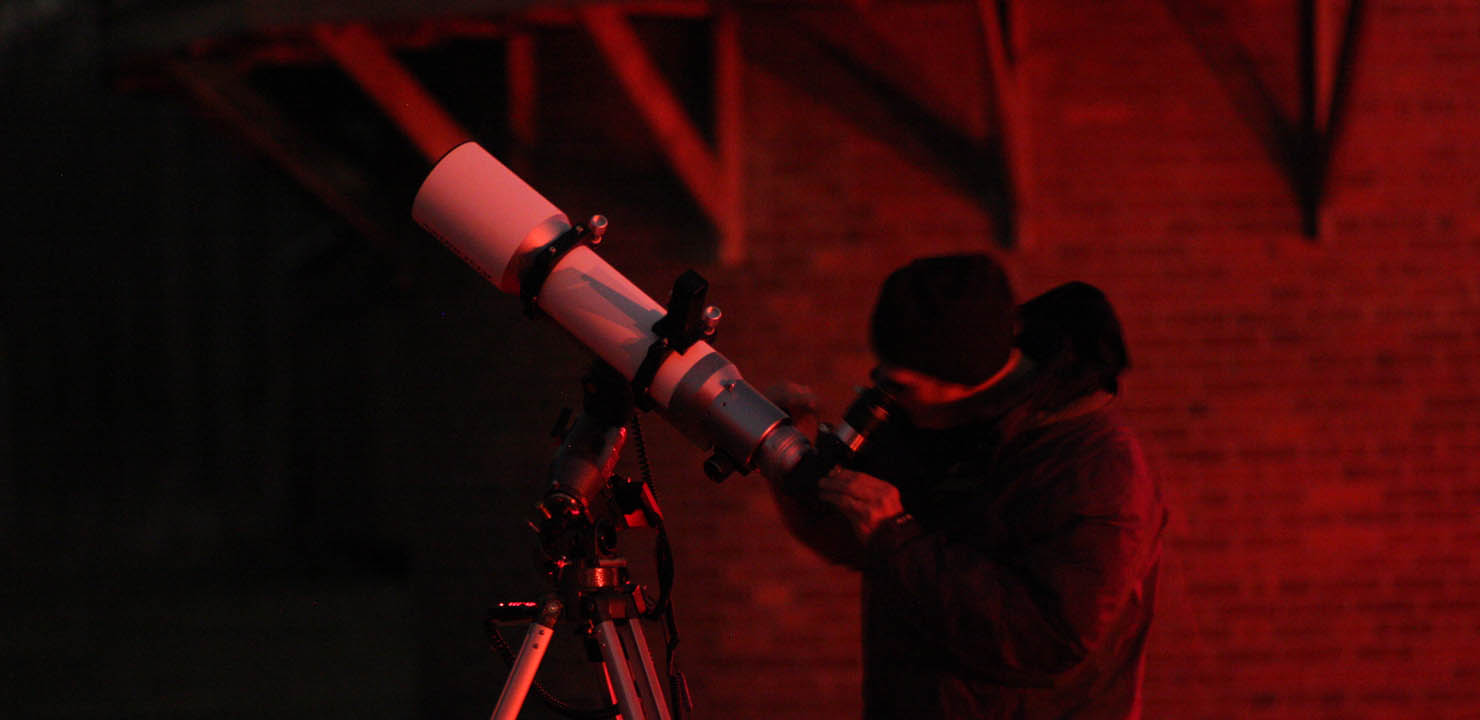
Observatory night
by Dave Huestis & Jim Hendrickson
Stop the presses. Breaking News! Guinness Book of Records contacted.
For two consecutive Saturday evenings the skies were clear so Seagrave Memorial Observatory could host an open night for observing the heavens. Have we somehow jumped into an alternate reality?
Whatever the reasons for our good fortune, a total of 25 guests enjoyed clear skies on March 30 and viewed Jupiter, the Orion Nebula and one of the open clusters in Auriga during our two hour observing session.
Members Bob Horton, Conrad Cardano, Jim Hendrickson, Ed Haskell, Alex Bergemann and yours truly arrived early to possibly get a glimpse of Comet PANSTARRS. Unfortunately it was still too low behind our northwestern tree-line,
Some of those guests had arrived around 7:50 pm, and we quickly trained the Clark refractor on Jupiter to provide a decent view of the planet and its four Galilean moons. To one side of the planetary disk was Io. On the other side were Ganymede, Europa and Callisto. Alex said he could see the Great Red spot, though I and others could not detect it. Based on web-site data it had transited Jupiter’s central meridian around 7:30 pm, so I have not doubt it was there.
A prospective new member, Matt White, also arrived early. He was very impressed with the Clark itself and the beautiful views it provided. Matt has his own telescope, and not only observes visually but also has gotten into astrophotography. Matt will be submitting his application for membership at the April monthly meeting.
Then at 8:08 pm the above members and a handful of guests were all treated to a -8.5 Iridium flare. We could see it coming out of the northern sky heading almost due south. It flared when it was just to the west of Regulus in the constellation of Leo. It was one of the brightest flares I had seen in quite a while.
We slewed over to the Orion Nebula and gave our visitors a good look at this vast star-forming region located in Orion’s sword. With no moonlight one could easily see the greenish-tinged wispy tendrils of this vast dust cloud. We also called everyone’s attention to the four Trapezium stars, born about one million years ago from some of the nebula material. There is an estimated 1000 stars that reside in an area just four light years across in this region of space. Imagine what this object will look like when more of those stars finally emerge from the dust cloud that enshrouds them.
We proceeded to close up just after 10:00 pm, and by 10:20 pm we were headed for home.
Can our good fortune hold up for next Saturday’s open night? We can only hope. If it does it may mean we are on track to set a new Seagrave Observatory world record for consecutive clear open nights!
David A. Huestis
Historian/Skyscrapers, Inc.






